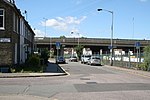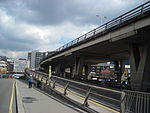St Andrew's Church of England High School
1861 establishments in England2020 disestablishments in EnglandDefunct Church of England schoolsDefunct schools in the London Borough of CroydonEducational institutions disestablished in 2020 ... and 2 more
Educational institutions established in 1861Use British English from November 2022
St Andrew's Church of England High School was a Church of England voluntary aided school in Central Croydon, Greater London. First opened in 1862, The school was part of the educational provision of the Diocese of Southwark and later, the London Borough of Croydon. It closed in 2020.
Excerpt from the Wikipedia article St Andrew's Church of England High School (License: CC BY-SA 3.0, Authors).St Andrew's Church of England High School
Waddon Road, London Waddon (London Borough of Croydon)
Geographical coordinates (GPS) Address Nearby Places Show on map
Geographical coordinates (GPS)
| Latitude | Longitude |
|---|---|
| N 51.36948 ° | E -0.10987 ° |
Address
Waddon Road 57
CR0 4LH London, Waddon (London Borough of Croydon)
England, United Kingdom
Open on Google Maps











